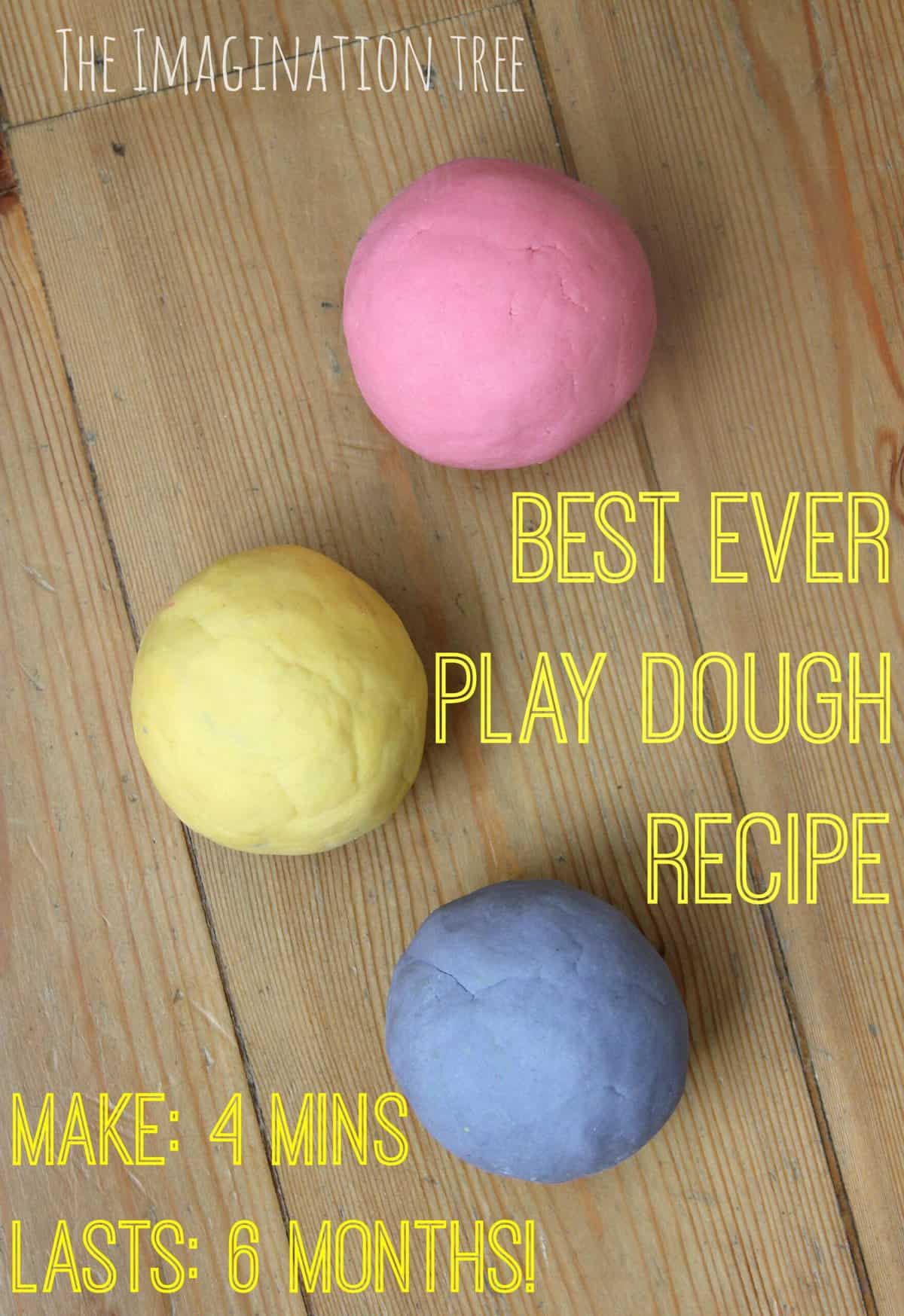Ultimate Easy Play Dough Recipe for Endless Fun with Your Kids
Hello, awesome parents! Ready to dive into a colorful world of fun and creativity with your little ones? Making play dough at home is not only a terrific bonding activity, but it’s also a delightful way to inspire your children’s imaginations. Plus, it’s incredibly easy, and guess what, you can make non-toxic play dough with just a handful of ingredients you probably already have in your pantry! Sounds fantastic, right? Let’s get started with the ultimate easy play dough recipe that guarantees an afternoon filled with joy and creativity!
Why Make Your Own Play Dough?
Before we get our hands messy, let’s talk about why homemade play dough is just so wonderful. By making your own play dough, you have total control over the ingredients, ensuring a safe, non-toxic playtime experience for your kiddos. It’s also a cost-effective alternative to store-bought versions and can be customized with your child’s favorite colors and scents. Plus, the process of measuring, mixing, and molding is an excellent way for children to develop fine motor skills and learn about colors and textures!
What You’ll Need for Your Homemade Play Dough
- 2 cups of all-purpose flour
- 1/2 cup of salt
- 2 tablespoons of cream of tartar (for elasticity)
- 2 tablespoons of vegetable oil
- 1 1/2 cups of boiling water
- Food coloring of your choice
- Optional: Essential oils for scents
- Optional: Glitter for a sparkly effect
Now that we’ve gathered our ingredients, let’s move on to the simple steps to create colorful play dough that will bring hours of entertainment to your home.
Step-by-Step Guide to the Perfect Play Dough
- Mix the Dry Ingredients: In a large mixing bowl, combine your flour, salt, and cream of tartar. Give it a good whisk to make sure everything is nicely integrated.
- Add Oil and Hot Water: Next, fold in the vegetable oil. Once it’s evenly distributed, carefully pour in the boiling water. Remember, safety first – this step is definitely for the adults or older kids with supervision!
- Color It Up: It’s time for the magic! Divide your dough into balls, and then poke a little hole in the center of each ball to add your food coloring. Fold the dough around the color and begin kneading to spread the color evenly. Want a sensory boost? Add a few drops of child-safe essential oils or some glitter here for that extra pizzazz!
- Knead The Dough: Keep kneading each piece of dough until the color is fully mixed, and the dough has a smooth, pliable texture. If the dough feels too sticky, add a bit more flour; if it’s too dry, add a few drops of water.
- Play Time!: And just like that, you’re done! Hand over the fabulous play dough to your eager kiddos and watch as their imaginations run wild. Don’t forget to store the play dough properly after playtime to keep it soft and reusable. Airtight containers or ziplock bags are perfect for storage.
With these simple ingredients and easy-to-follow steps, you and your kiddos are well on your way to an afternoon filled with imaginative play. Remember, the fun doesn’t stop here! There’s plenty of room for experimentation with different colors, scents, and add-ins. You can create a whole spectrum of play dough to spark joy and creativity in your child’s playtime.
This homemade play dough recipe is not only easy to make but also brings the opportunity to teach your kids about measuring, mixing, safety precautions with hot water, and the joy of seeing their creations come to life. What’s more, as you mold and create together, you’re also molding lifelong memories filled with laughter and learning. So roll up those sleeves, prepare your workspace, and get ready to create the ultimate easy play dough with your little ones!
Stay tuned as we’ll continue exploring the playful world of homemade play dough, and I’ll share tips on how to enhance your play dough fun, store it correctly, and even troubleshoot common play dough dilemmas.
Happy dough-making, dear parents! Get ready to knead, roll, squish, and create those wonderful memories that will stick longer than play dough on your kitchen table. Let’s get ready to sculpt some joy!

Five Essential Tips for Parents Preparing the Ultimate Easy Play Dough
1. Safety and Supervision
When preparing homemade play dough, safety comes first. Boiling water is necessary to bind the ingredients, but it does pose a risk for little ones. Always have an adult handle the hot water, and keep inquisitive little hands at a safe distance to prevent any accidents. Supervision not only ensures safety but also turns the process into a teaching moment about caution and responsibility.
2. Quality of Ingredients
You’ll be using simple pantry staples for your play dough, so quality matters. Opt for fresh all-purpose flour and fine salt to ensure a smooth texture. If the flour is too coarse or the salt is too chunky, it can make your dough grainy. And don’t skip the cream of tartar—it’s key for that elastic quality we’re after!
3. Tools of the Trade
Have all your tools ready before you begin. A large mixing bowl, sturdy wooden spoon, measuring cups, and spoons are must-haves. Clear an area on your kitchen counter for easy kneading and mixing. Keep tools that children can safely use, such as cookie cutters and rolling pins, handy for shaping and cutting the dough once it’s ready.
4. Customizing Your Play Dough
Unleash your creativity and make the play dough special by customizing it! You can use natural food dyes for color and incorporate glitter for sparkle. For an extra sensory experience, consider adding a few drops of kid-friendly essential oils. Lavender can be calming, while citrus can be uplifting during playtime. However, always check for allergies before adding any scents.
5. Storing for Longevity
One key benefit of homemade play dough is its longevity when stored correctly. After each play session, ensure the play dough is cooled down, without any bits of dirt or debris, and store it in airtight containers or sealable bags. Squeeze out excess air and keep it in a cool, dry place. A good practice is to label the containers with the date of creation to keep track of freshness.
By keeping these tips in mind, your play dough crafting session will be a smooth, enjoyable, and enriching experience for you and your child. Embrace the mess, enjoy the process, and treasure the pure joy on your child’s face as their imagination takes shape in their tiny hands.
Enhancing the Play Dough Experience
Here are a few additional ideas to make your play dough session truly unforgettable:
- Create themed play dough kits by adding plastic animals, rolling pins, cookie cutters, and nature items such as shells or leaves for impression-making.
- Introduce lessons on color theory by mixing primary colored dough to create secondary colors.
- Incorporate play dough into storytelling, allowing children to create characters and props that bring their stories to life.
The possibilities with play dough are as limitless as your imaginations. Enjoy experimenting with textures, shapes, and additions to keep each play session fresh and exciting. Not only will your children have a ball, but you’ll also be nurturing their developmental skills in a fun and engaging way.
Troubleshooting Common Play Dough Concerns
Is your play dough too sticky? Too dry? Fret not! If the dough is sticking to hands and surfaces, sprinkle a little more flour during kneading. Conversely, if the dough has started to dry out, a few drops of water worked into the dough can revive its pliable nature. It’s all about finding that perfect balance for the ultimate play dough experience.
As you venture into making your own play dough with love, you’re sure to create more than just fun toys—you’re shaping memories that will last a lifetime. Enjoy every squish, every roll, and every beautiful mess. Happy crafting!
See more great Things to Do with Kids in New Zealand here. For more information see here
Disclaimer
The articles available via our website provide general information only and we strongly urge readers to exercise caution and conduct their own thorough research and fact-checking. The information presented should not be taken as absolute truth, and, to the maximum extent permitted by law, we will not be held liable for any inaccuracies or errors in the content. It is essential for individuals to independently verify and validate the information before making any decisions or taking any actions based on the articles.




